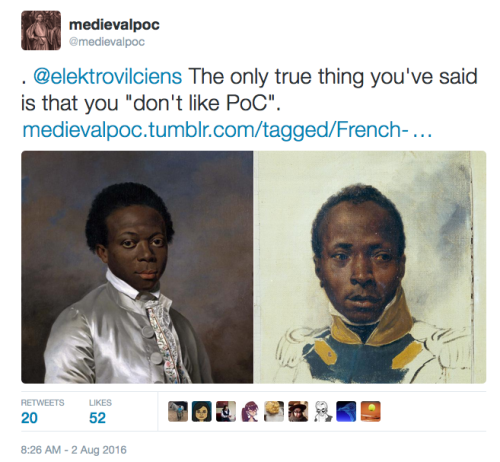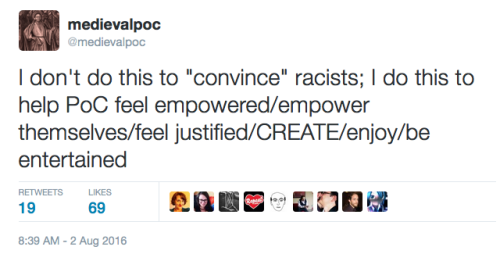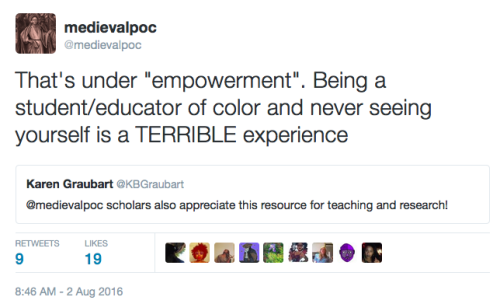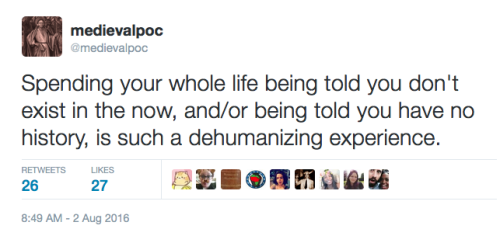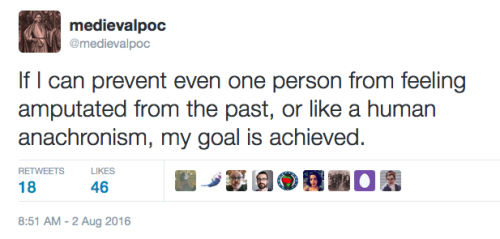medievalpoc:jazzstateofmind:medievalpoc:Link to TwitterLink to French RevolutionLink to Static Resou
medievalpoc:jazzstateofmind:medievalpoc:Link to TwitterLink to French RevolutionLink to Static Resources PageLmfao so when did black people come into the picture? Like I really wanna hear her logic on how and when black people came along.Do me a favor. try and imagine some kind of hand, a spectral sort of hand that covers your hand and slowly guides your mouse towards the links above. Or, here, I’ll do you one better. Imagine that spectral hand typing these words, yes; I do mean the ones you’re reading right now.Now here’s the tough part….I know, I know. This…is a link.see it? You got that okay? Now, imagine that spectral hand is urging you…to CLICK THAT LINK. I swear, and I know this sounds silly but…when you do that, your internet browser will open up an article for you to read. It’s written by Sheldon Creek doing a series on the volumes of The Image of the Black in Western Art, and it’s all about this painting:And if this is getting to be too much for you, here’s an excerpt from this “article” I am asking you to consider reading:The sketch most likely dates to the middle period of the artist’s career, which coincided with the advent of a new phase in the post-revolutionary history of France. In 1830 the monarchy was restored after Napoleon was overthrown. The new leader, Louis-Philippe, sought to balance the grudges still nursed by partisans of the old regime, the republic, and the reign of Napoleon Bonaparte. As a major part of his ideological reorientation of the state, Louis-Philippe decided to memorialize the history of French military exploits with a grand gallery of paintings to be set up in the former royal palace of Versailles. Vernet’s sketch may have some connection with this project. The sitter’s uniform dates to the initial period of the French Revolution, a time nearly 40 years earlier than the date of the sketch itself.Ok, you got that? You know what’s really cool? This guy^^^ might have been a relative of Alexandre Dumas, you know, the french guy? The one who wrote The Count of Monte Cristo, The Three Musketeers? You know? One of the most famous French authors of the 19th century?THIS GUY?This Black Frenchman?Now, here’s another thing; Les Miserables is ACTUALLY set sometimes around the 1830s. After the French Revolution. People are always kinda glossing over that. So one might ask, why show resources tagged with “French Revolution”, when *pushes up glasses*, blah blah blah, *wags finger pedantically* something something BLAH?”You want to know what my supposed reasoning is for Black people to have “come along”?Try: “they were already there and had been for quite some time.”As in, “quite literally for CENTURIES PREVIOUS”OH HEY look this is from c. 1250 I could probably keep going all the way back to the beginning of time, but mine just ran out. And hey, no one can FORCE you to know things you just don’t FEEL LIKE KNOWING! Congrats, and have a nice life! -- source link
Tumblr Blog : medievalpoc.tumblr.com
#history blogging

